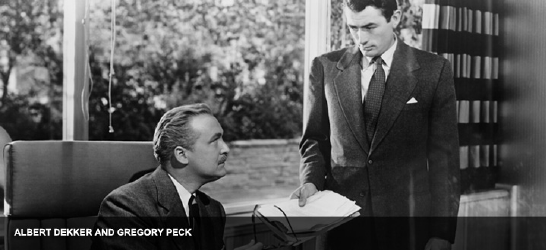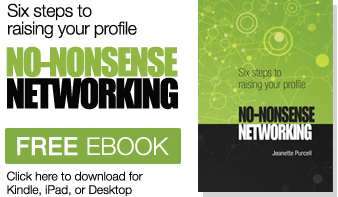
Showing all pages regarding one one.
Why coaching works

Some people baulk at the cost of coaching but, when you consider the value of coaching when compared to other forms of training, it suddenly becomes an investment worth making. Why does coaching work?
- It’s a one-to-one exercise where all the attention and focus is on you. You get to decide what you want to achieve and what specific topics you want to discuss at each session.
- You get to think aloud and talk through issues with an expert who will guide you through the problem-solving process. No one is judging you and there are no interruptions or distractions for the duration of your session.
- You get an opportunity to try out new ideas or behaviours in a supportive environment. Rehearse a presentation or a difficult conversation and get some professional feedback and constructive suggestions for improvement.
- You can measure your progress. Any good coach will talk to you about what you want to achieve by the end of the programme and how success will be measured. People assume that the benefits of coaching or training can’t be measured – they can!
Choose your coach wisely. They should be someone with real business experience as well as coaching experience. And you should feel entirely comfortable with them – ask for a trial session before you commit. With the right coach you will quickly recognise the benefits of coaching – it’s a small investment for a significant return.
How personal impact can make the difference

As a Trustee of a Community Trust in South East London I was recently involved in the appointment of a full-time youth worker. There was a lot of interest in the position and interviews were held with six short-listed candidates. The interview panel asked each candidate the same questions and carefully scored each person against their ability to meet the requirements of the job. At the end of a long day two candidates stood out from the others and both had achieved exactly the same score. How to choose between them?
The interview panel began to discuss which candidate came across best in the interview. We discussed ‘likeability’ – something that’s hard to define but often referred to as ‘personal impact’. For two candidates, both equal in terms of their skills and experiences, it was the positive impact they made with the panel that made the crucial difference. What does personal impact mean and how do we know it when we see it? There are probably three key factors that help to achieve personal impact:
- A smile is so important – it conveys warmth and enthusiasm. When you smile you are letting others know that you are feeling positive and enjoying their company.
- Positive body language. The candidate we interviewed who sat back in the chair with their arms folded was less engaging than the one who sat forward keeping an open posture. A little animation when you are talking helps to demonstrate eagerness and interest in the discussion.
- Authenticity. People who come across as genuine, honest and human almost always generate a positive response from others. Be yourself, admit your weaknesses (we all have them!), show genuine concern and interest in what you do. Others will believe in you and warm to you as a result.
Personal impact is not easy to define, but with some attention to the way you look, move and talk it can be acquired. What’s more, it is as important to a youth worker as it is to any leader. Skills and experience can get you so far, personal impact makes the difference.
DON’T MISS THE JPA MASTER CLASS “PERSONAL IMPACT AND CONFIDENT NETWORKING” ON 10 DECEMBER 2013.
VISIT www.jeanettepurcell.com/jpa-master-class-series/ FOR MORE DETAILS.
JPA Master Class Series Ticket Office
JPA Master Class Series
The JPA Masterclass Series has ended for this year.
Overview
You don’t have to be an extrovert or the life and soul of the party to have personal impact. But any leader will tell you that success in business requires a high level of confidence, polish and professionalism. This personal impact Master Class will give you the skills and techniques you need to present yourself in a positive way and to become a confident networker. Delivered by Jeanette Purcell, international leadership specialist and experienced public speaker, the course is practical and fun. Jeanette’s promise is that you will leave the Master Class with a range of tools and ideas that can be applied immediately and will make a positive difference to the way you work.
Who should attend?
This Master Class is for managers and senior partners working in large or small organisations, consultants and anyone who needs to promote themselves externally or internally. If you network, talk to clients or simply need to make a more positive impact with people, you will benefit from this Master Class.
What does it cover?
- Understanding the power of networking and the benefits of building better business connections.
- Myth-busting. Overcoming obstacles and challenging common perceptions of networkingskills
- Maximising your personal impact. Walking and talking with confidence.
- Presenting yourself in a powerful, memorable and positive way
- Networking ‘know-how’. The tools and techniques that help you to build better networks.
“My objective is to persuade people that the investment they make in developing their networks will result in tangible rewards and benefiits. I have delivered this Master Class to a range of international audiences and the feedback is overwhelmingly positive. I think what people appreciate is the practical nature of the course and my ability to make networking an exciting prospect rather than a daunting chore. As one delegate said recently: ‘You were inspirational. I have already put what I have learnt into practice and it worked!”
What will I gain as a result of attending the Master Class?
- A new level of self-awareness about what makes you unique and interesting to others
- The ability to present yourself in a powerful and memorable way
- New techniques for communicating and interacting effectively
- The confidence to network and build successful business relationships
- A plan for applying what you have learnt and achieving a sustainable improvement
What will I take away?
Training that lasts – A plan that will enable you to apply all that you’ve learned on an ongoing basis…
A Senior Manager for a multi-national firm attended the Master Class in 2013 and applied their new networking skills to address the fall out from a UK-wide restructuring exercise. Internal networks and a mentoring initiative was established to rebuild critical business connections, re-energise staff and support information exchange between business units. These initiatives resulted in significant improvements in efficiency, better communication and higher levels of staff engagement across the company.
FREE 15 minute 1 to 1 follow up coaching session.
How much does it cost?
The Master Class fee is £235 per delegate payable at the time of booking.
The fee is all inclusive and covers all materials and refreshments including a three course buffet lunch.
Multiple Bookings Discount
Where multiple bookings are made the discounted fee of £195 per delegate will apply regardless of when the booking is made.
Where is the Master Class being held?
The Grand Connaught Rooms, 61-65 Great Queen St, London WC2B 5DA. The venue is easily accessible and close to all London transport links. The nearest tube is Holborn which is served by the Central and Piccadilly lines.
Click here to book your tickets
Coming up in JPA’s Master Class Series
Effective communication
– anyone, anytime, anywhere
8 July 2014
5 essential leadership lessons
16 September 2014
Working effectively with Trustees
4 November 2014
JPA Master Class Policy
JPA accepts firm bookings through the JPA website – in making such bookings clients accept our bookings and cancellation policy.
Provisional bookings may be made but must be confirmed at least 30 days before the course date or else they will be considered a firm booking and will be subject to our standard booking and cancellation policy.
Confirmed bookings may be cancelled up to 21 days from the course start date without any penalty. Cancellation within 21 days of the course start date will mean that the full fee is payable for the course and there will be no refund. We will however consider transferring your place to another course date if a suitable course and place is available.
Name substitutions can be made at any time before the course without penalty.
Only one discount can be used per booking.
JPA does not store credit card details nor do we share customer details with any 3rd parties.
JPA reserves the right to cancel a course if insufficient bookings have been received. Delegates will be offered an alternative date or a full refund of the course fee. We reserve the right to make changes to the programme and the right to refuse any booking.
How to manage the pain of change

While working on a major change management project I have been thinking about the nature of change and what it takes to manage the process successfully. It strikes me that many businesses struggle with an apparent tension between the desire to define their organisation’s strategy and structure for the foreseeable future, and the recognition that their world is in a constant state of flux. Of course the harsh reality is that, while the long term vision can remain constant, a company’s strategy must be flexible and capable of modification to reflect ever-changing internal and external environments.
The issues that arise in any change project are as much to do with people as process. Leading transformation successfully involves a deep understanding of people and their behaviour, knowing what is likely to motivate people to do things differently, why they resist change and how to communicate effectively throughout the process. It also involves identifying the people who are going to help you in your mission (the ‘change champions’) and those who are likely to generate conflict and hostility. The process nearly always involves taking some tough decisions about people and are likely to lead to difficult conversations with those who cannot cope with the transformation or the planned future. These people issues are probably the most difficult for any leader to manage successfully. What can we do to help people through change?
The process works best if your team works in an environment that enables change. In such a setting they are more likely to respond positively to the change you want to make. To create a ‘change-ready’ environment consider the following:
• Regularly set the expectation that things will change and continue to change
• Explicitly encourage and recognise behaviours that support or enable change
• Support continuous innovation and improvement in working practices
• Give your team familiarity with change. Involve them in change projects
• Establish a culture that values flexibility and encourages flexible ways of working . In this way people are less inclined to feel they own a job or have various entitlements that might hold up the change process.
Change projects may be large scale but never forget that change happens at the individual level. You can’t necessarily deal with everyone individually but certain steps should be taken to consider how your people will fit into the new scenario. Consider the following questions for each person affected by the change:
• Do they understand the change and what it means for their role?
• Are they capable of working in the new set up? Who needs coaching or training?
• Are they willing to work in the new set up
• Are they motivated to work differently without reverting to the old ways of working
As the saying goes “We change our behaviour when the pain of staying the same becomes greater than the pain of changing.” Pain is an inevitable aspect of change. But however uncomfortable or difficult it may be, you must be able to manage change successfully. Change is not an occasional event but an ongoing part of every manager’s job.
Andy Murray – feel the love!

I’m sure I wasn’t the only person to shed a tear at the sight of Andy Murray lifting the Wimbledon trophy above his head on Sunday. It was a fantastic, hard-won and emotional victory. Reflecting on Andy Murray’s progress over the last few years I realised that emotion has played a major part in his development as a player and has contributed to the remarkable increase in his fan-base. Success is often helped by having a loyal and strong following – in sport as well as in business – and it is important to understand that emotion is a key factor in both contexts.
Three years ago Andy Murray was a difficult character to like. He had a fan-base but had not earned a great deal of support from the general public. He was criticised for being moody and stony-faced – someone who was so focussed on his sport that he was a ‘closed-book’ to observers. That all changed last year when, on losing the Wimbledon final to Roger Federer, Murray found it hard to speak through his tears of disappointment. These were not carefully planned tears, put on for PR purposes, but genuine sobs that he tried so hard to fight back. It was this display of emotion that won him support and affection from a wider audience. What people saw on that day was a human being with emotions and feelings like everyone else. Here was a man who, in that emotional interview, showed the world how badly he wanted to win and how deeply he felt his failure. And by displaying that emotion, albeit not in a calculated way, Andy Murray won the hearts of people who, from then on, would follow him more closely and with more commitment than before.
In the business context we can see that sometimes it is necessary for followers to see the human side of their leader. The tough, macho style of leadership is becoming a thing of the past. People give their commitment and loyalty to those who are capable of displaying emotion now and again. No one wants a leader who sobs at every set-back or who flies into a rage when things don’t go as planned. But neither are we attracted to those whose steely determination to succeed makes them unapproachable, insensitive and detached. We need some kind of human connection with leaders before we are ready to make an emotional commitment to them in return. And it is the leader who is prepared to show some passion and sensitivity who is likely to win that level of commitment.
I cried for Andy Murray because I had witnessed his own tears a year ago. Like so many other people I supported him because I knew just how important winning was to him. That emotional connection with those who we follow is as important in business as it is in sport. Well done Andy, and feel the love!
How to create a winning bid
When did you last win a major piece of work without having to put in a bid? Doesn’t happen very often does it? At the very least you or your company will probably be used to writing proposals on a regular basis, or submitting statements about why you should be given the job.
Not many years ago tendering was largely associated with large supplier contracts or with public sector procurement. Now, bidding for work is common practice for most organisations. In a heavily regulated environment, companies are under pressure to manage risk, act with integrity and to demonstrate transparency in all their dealings – especially with their suppliers. Jobs for the boys are a thing of the past. It takes more than a quick chat and a handshake to win work these days.
Often the task of preparing a proposal or bid falls to staff who lack the required training and skills. They may be senior managers, they may be experts in their own field, but have they had any experience in bidding? Do they really know what makes a winning bid? For such a crucial task it is surprising that companies don’t spend more time developing staff in this area. Putting together a tender is not difficult, but knowing more about the process, the pitfalls and what makes a winning bid can make all the difference.
There is always the context to take into account when helping businesses to create winning bids. What is the company trying to achieve? How is the company positioned? What are its strengths and how are they communicated? When I am working with teams or individuals on the subject of bidding, the answers to these questions inform the design, content and presentation of the bid document. There are also some general tips and techniques which help to create the perfect bid. My top ten tips are at the end of this article. If I had to highlight one tip it is the importance of asking questions. In my experience people are reluctant to enter into a dialogue with a buyer or prospective client during the bidding process. They are even more anxious about asking questions, fearing this will be taken as a sign or ignorance or weakness. On the contrary, asking intelligent, questions demonstrates that you are interested and want to ensure that your bid is relevant, useful and informative. It also helps you to build a relationship with the buyer. And evidence shows that buyers tend to give the job to people they know they can work with.
The old boy network may be a thing of the past, but relationships still matter! Download JPA’s Top Ten Tips for creating a winning bid here: Top Tips for creating a winning bid
Alex Ferguson’s leadership legacy
Alex Ferguson, the world’s most famous football manager, announced his retirement today. He was the man behind Manchester United’s success and was known for his unwavering determination and steadfast focus on results. But what can we learn about Alex Ferguson as a leader and would his leadership style work in the real world? Here are Alex Ferguson’s top three leadership lessons.
Inspire your team with passion and commitment. Nothing motivates a team more than a leader’s own determination and exuberance. Alex Ferguson inspired his team by getting them to believe in themselves, telling them stories and helping them to visualise victory. He said:
“I remember going to see Andrea Bocelli, the opera singer. I had never been to a classical concert in my life. But I am watching this and thinking about the co-ordination and the teamwork, one starts and one stops, just fantastic.”
Don’t be afraid to deal with under-performers. OK, we have to steer clear of employment tribunals but Ferguson put performance and results before everything. He supported and defended his players for as long as they performed. But he managed talent effectively, having the courage to move players on when the time came.
“You can’t ever lose control — not when you are dealing with 30 top professionals who are all millionaires. And if anyone steps out of my control, that’s them dead.”
Give praise when it’s due. Ferguson was a tough, uncompromising and sometimes aggressive boss. But he knew how important it was to give praise. And because he was so demanding, that praise was all the more effective when it came.
“For a player – and for any human being – there is nothing better than hearing “well done”. You don’t need to use superlatives.”
Alex Ferguson has done what many leaders cannot do – made his exit early, leaving the crowd wanting more.
How do you think you did?
After running a residential weekend on Leadership Skills for some MBA students I was keen to make sure they applied their learning when they got back to work. I wanted them to commit to at least one action that would change the way they work and improve their management skills. “So what are you going to differently tomorrow?” I asked. The responses were many and various but were not specific enough for my liking.
“I’m going to try to listen more and talk less” one said. “I’m going to improve the way we make decisions in my organisation” offered another. These were encouraging resolutions but were not specific enough for my liking. Then one of the quieter members of the group said “Well from now on, whenever I am giving feedback or carrying out an appraisal, I’m going to start the conversation with ‘How do you think you did?’”. It’s a little thing, but her words made my heart sing!
The weekend course had involved a lot of group work where individuals gave feedback to each other on their performance after each exercise. At first they approached this by immediately reeling off a list of what they thought the other person did well and what they didn’t do well (sadly the emphasis was nearly always on the negatives). However, I had been encouraging them to start each feedback session with a question: “How do you think you did?”. Gradually, they got the hang of it and began to see the benefits of this approach.
There are many situations where managers are called on to comment on the performance of their staff. It could involve one of those difficult conversations where concerns about performance need to be raised. It might be part of a performance appraisal or it could just be because someone has asked you for feedback. If the feedback is positive the conversation is fairly straightforward. If not, the approach needs careful handling.
There are two main advantages of starting with the question “How do you think you did?”:
- If things have gone wrong or there are performance problems there is a good chance that the other person will talk about these problems in their response to your question. How much better is it for them to raise the issues rather than you? Immediately you have been offered a way in to a discussion about why these problems came about and how they can be addressed. Yes, I know that there are some people who will never own up to mistakes or short comings but in my experience most people are reasonably self-aware and, given the right environment, they are relatively honest.
- If the performance issues are identified and raised by the other person, rather than you, there is a much better chance of them taking responsibility for the problem and doing something about it. When a person is simply told that they’ve got something wrong, even though they might agree, they are more likely to question their manager’s judgement and go on the defensive. In this situation they will feel much less inclined to address the issues, and so improving their performance becomes an uphill battle.
Giving feedback and managing performance involves a lot more than opening the discussion with a question. But that question can make difficult conversations a whole lot easier. I loved my group member for giving herself a simple practical action that she can implement immediately at work. Just six words – “How do you think you did?” – can be surprisingly effective.
Obama couldn’t manage expectations. But Yes We Can!
So Obama is back after what seems like a never-ending US election. He faces some tough challenges but, with the first term behind him, I think he stands a better chance of success. When Barack Obama was elected as President in 2008 he, more than other political leaders, carried with him the unrealistically high expectations of those who put him in power. The euphoria around his entry to the White House fuelled the suggestion that here was the new Messiah, capable of performing impossible tasks, eradicating corruption, conflict and inequality in the world. Not long into his term of office he was being criticised for not delivering on his promises, but most of these were promises he never made. The expectations of him were unrealistic and there was very little he could do to manage those expectations.
That is not the case for most of us. Managing expectations is essential if you want to earn respect, keep your customers and maintain support from the people around you. Yet so many of us fail in this respect. It is all too tempting to over promise and under deliver. We get carried away by our own enthusiasm for exciting ideas, we want to galvanise support, we want to be optimistic rather than negative about what can be achieved. With our customers we don’t want to say ‘no’ or give disappointing news. But enthusiasm without substance leads to raised expectations and, if we don’t deliver, the result is loss of confidence in you, scepticism, and disaffected colleagues. Customers will leave you if you don’t follow through and do what you say.
Managing expectations doesn’t mean that you can’t be enthusiastic or set out your aspirations or ideas for the future. It simply requires an honest approach when communicating these ideas. Describe the goal and be enthusiastic about it but be realistic about what can be achieved by when, perhaps setting out the obstacles to be overcome before the dream can be realised. Aspirational talk has to be tempered with practical guidance. People will be more ready to accept your ideas if you are realistic about their implementation. Recently I gave some feedback to a client of mine which came from one of his colleagues. The colleague said “he has a positive ‘can do’ attitude and always delivers.” I know that my client has a positive attitude to his work but he won’t say he ‘can do’ something when he knows he can’t. That’s managing expectations.
And the same goes for your customers. How many times have you, as a customer, been promised a call back in 5 minutes or a delivery within 2 days and been disappointed when the call or delivery doesn’t come? Rather than feeling delighted our customers feel angry and let down when we fail to deliver. How much better to be honest with them about what can you can do by when. It might not be exactly what they want to hear but they will appreciate your honesty and you won’t disappoint them.
There was little Barack Obama could do in his first term to manage expectations. We however, have many opportunities to ensure that we are honest and realistic in our communications and that we only promise when we know we can deliver.





















